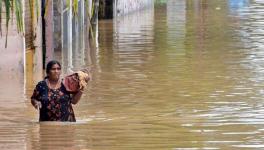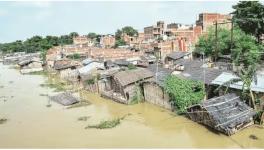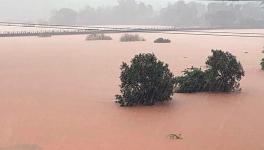2,923 Killed in Daily Natural Disasters in India in Jan-Sept
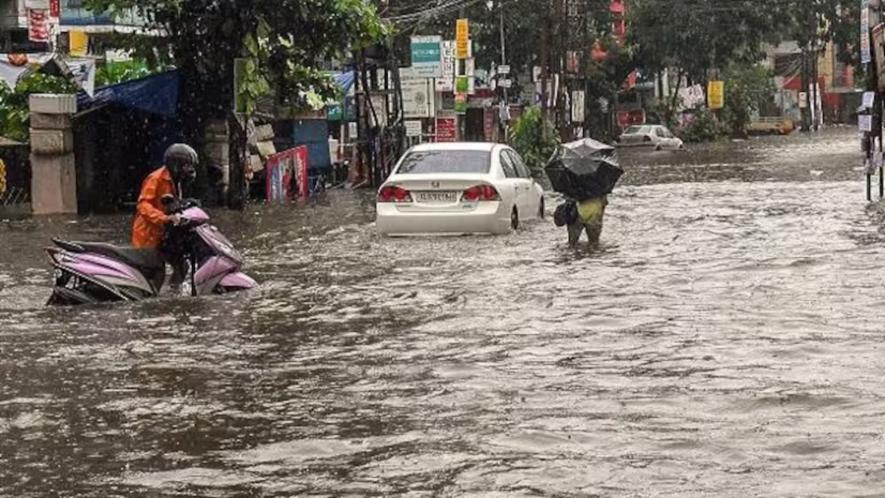
Commuters wade across a water-logged street surrounding the Ernakulam city after monsoon rainfall, in Kochi on Monday, July 16, 2018. Image Courtesy: PTI
Extreme weather events occurred in India daily from January to September, according to a latest report produced by the Centre for Science and Environment (CSE) and Down to Earth (DTE). During these nine months, disasters like cold waves, cyclones and lightning to heavy rain, floods and landslides claimed 2,923 lives in the country.
Near-daily disasters this year destroyed more than 1.84 million hectares of cropland and 80,563 houses and killed nearly 92,519 livestock. Named as ‘India 2023: An assessment of extreme weather events’, the details of the report can be found here.
Even the seemingly great amount of loss of lives and properties may be an underestimate, the report suggests, as data for each of the disaster events are not collated and the loss of public property and crops due to those events are not calculated.
The days with extreme weather events were highest in Madhya Pradesh (HP) occurring every second day. In terms of loss of human lives, Bihar topped with 642 deaths, followed by Himachal Pradesh at 365 and Uttar Pradesh (UP) at 341.
Punjab again reported the highest numbers of animal deaths at 63,649.
HP also reported the highest number of damaged houses at 15,407. From January 1 to September 30, that is in 273 days, extreme weather events were reported in all states and union territories on 235 days, which is around 86%.
The CSE/DTE report divided the nine months into three categories according to the seasons—winter (January-February), pre-monsoon (March-May) and monsoon (June-September). The summary of day-wise extreme weather events within the study period is portrayed in the figure below.
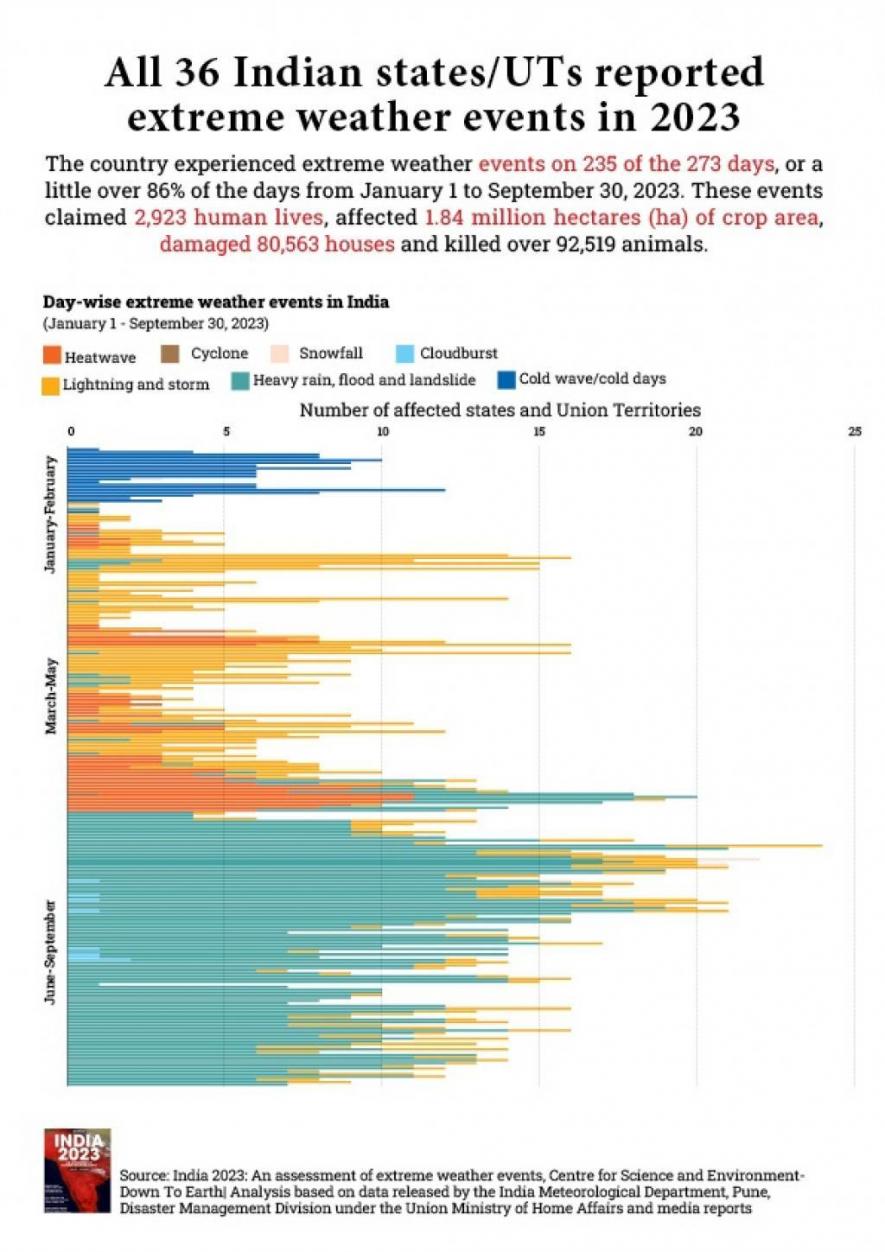
The figures are taken from ‘DTE’ about the ‘India 2023: An assessment of extreme weather events’ report, produced by CSE/’DTE’. Used here for representation only.
During winter, January had mildly warmer temperature than average, but February appeared hotter at 1.86 degrees Celsius and 1.36 degrees Celsius warmer than the average. January and February also remained drier than usual—January had a rain deficit of 13% and February 68%. During those two months, 28 days out of 59 days had extreme weather events.
Punjab and Haryana reported the most extreme events on 15 days, followed by Bihar and UP having at 14 days.
During the pre-monsoon period, extreme events were reported on 85 out of 92 days. In this period, lightning and storms were reported on 79 days while heatwaves were recorded on 28 days. Heavy rains, floods and landslides went to extreme level on 16 days.
Maharashtra was the worst hit with 41 days of extreme weather events while Rajasthan was second at 33 days.
The monsoon started a week late on June 8, but the entire country was rapidly covered by June 30. In fact, it happened 15 days earlier than normal, according to the report.
During the monsoon period, all the 122 days reported extreme weather events somewhere or the other, claiming 2,594 lives and damaging nearly a million hectares of cropland with 80,563 houses damaged.
Cyclone Biparjoy caused extreme rainfall in some states. HP had massive flash floods in July. The northeast and other mountainous regions had heavy rainfall in August while the rest of the country was dry. The monsoon had an overall deficit of 6%.
The regionwise break up of extreme weather events, number of deaths, affected cropland, house damage and animal loss are summed up in the report as in the figure below.
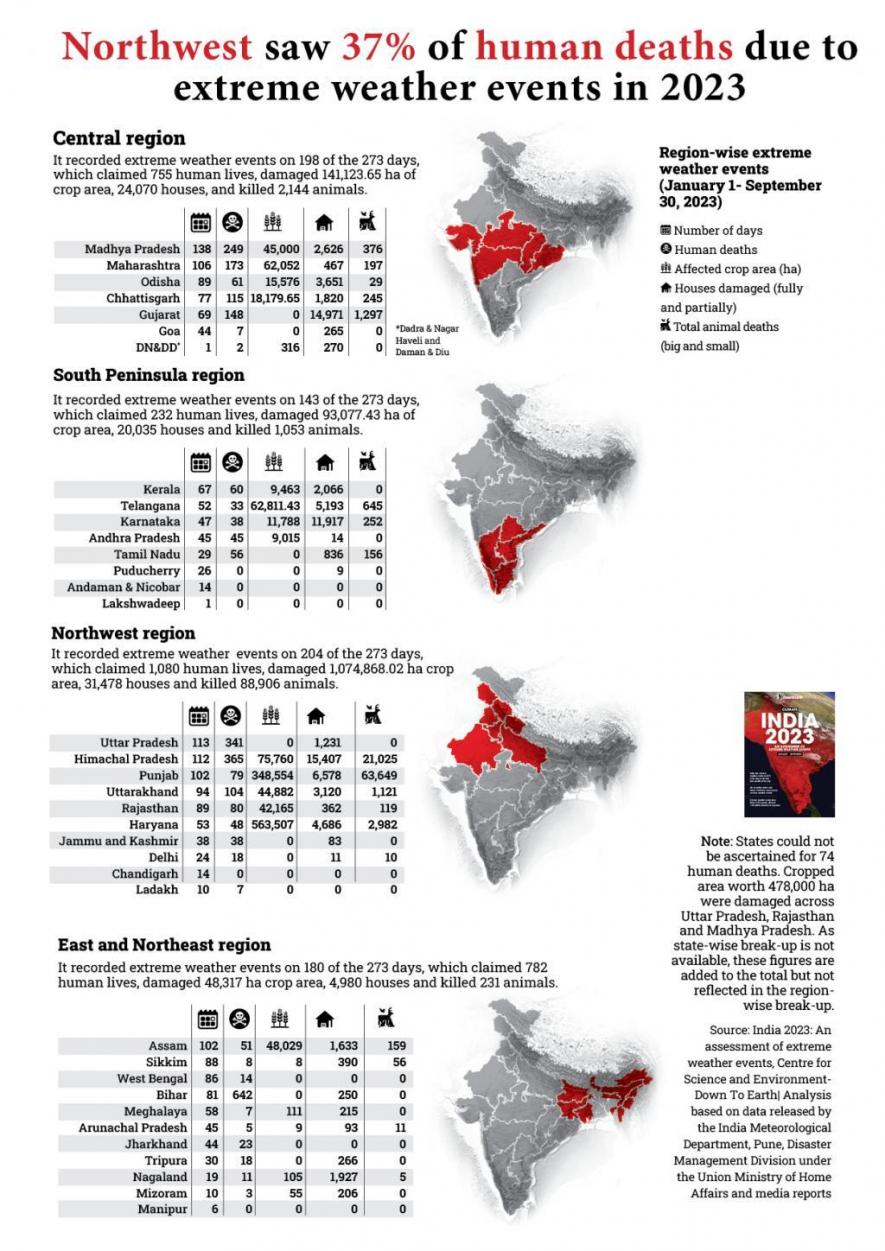
The figures are taken from ‘DTE’ about the ‘India 2023: An assessment of extreme weather events’ report, produced by CSE/’DTE’. Used here for representation only.
Get the latest reports & analysis with people's perspective on Protests, movements & deep analytical videos, discussions of the current affairs in your Telegram app. Subscribe to NewsClick's Telegram channel & get Real-Time updates on stories, as they get published on our website.









